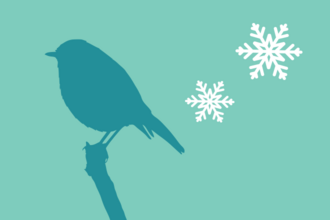©Les Binns
Our top 10 wildlife sightings for January
©Katrina Martin/2020VISION
Snowdrops
Drifts of snowdrops poking up through the woodland floor and along riverbanks are a welcome sight during these cold, winter months. They generally flower between January and March and are a sure sign that spring will return again!
Look out for them at woodland reserves like Warburg Nature Reserve near Henley.
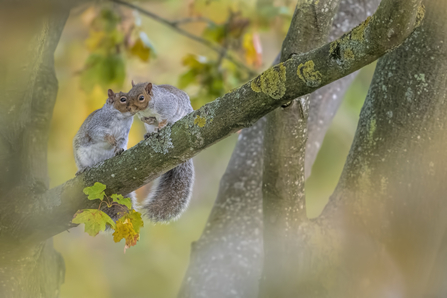
Squirrels on a branch by Roy Macdonald
Excited squirrels
While most humans are huddling inside for warmth, January is peak breeding season for grey squirrels.
Wait long enough in any woodland, park or garden and you might see two or three males chasing a potential mate over benches, fences and up tree trunks. You can also listen out for their broad repertoire of calls, including chattering, rasping, barking and the female's squeaking mating call.
Make a footprint trap to find out whether squirrels and other animals are visiting your garden:

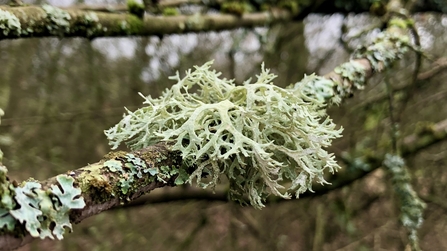
Spikes of oak moss by Charlotte Karmali
Lichen
A great wild highlight to spot while foliage is absent is lichen – a fascinating life form in which a fungus and an alga form a symbiotic partnership.
In the UK there are some 1,800 species of lichen, but some of the most distinctive include: oak moss, a ball of turquoise spikes that grows on tree branches; cup lichen, which produces tiny forests of green goblets on stalks; and yellow map lichen, which forms encrusted rosettes up to 15cm across.
Like snowdrops, lichens can be found at Warburg Nature Reserve or other woodland reserves such as Bowdown Woods in West Berks or Finemere Wood in Bucks.
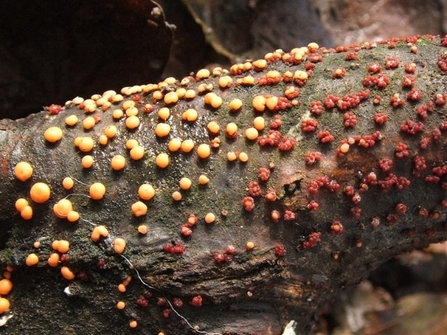
Coral spot fungus (Nectria cinnabarina) on a log. Picture: Lairich Rig/ Wikimedia Commons
Coral spot fungus
As well as lichen, there are still many winter fungi species to look out for in the woods at this time of year, including coral spot. Like other fungi, it spends most of its life hidden from view as a web of root-like structures called mycelia.
When coral spot reproduces, it emerges from its host – usually sycamore, horse chestnut or hornbeam - as a rash of bright orange dots, each one a reproductive structure that releases spores.
Finches on a busy feeder by Gillian Day
Busy bird feeders
The bleak midwinter is the perfect time to feed the birds: with resources scarce, a bird feeder can prove extremely popular with robins, greenfinches, tits, starlings and blackbirds, as well as winter visitors like waxwings and siskins if you're very lucky!
But you don't need to buy a feeder to feed the birds: you can also just throw out cut-up bits of fruit such as apples, pears and raisins, which provide vital hydration.
A black redstart in its preferred urban habitat
Black redstart
One bird you’re less likely to see on your feeder is the black redstart. A similar size to the robin, and named for its dark plumage and rust-coloured tail, this jaunty bird prefers industrial sites and old city buildings over the woodlands favoured by its relative, the redstart.
Its British population increased in the 20th century as it colonised bombsites following the second world war, but the more recent redevelopment of city centres threatens its urban habitat.
A rare bird in the UK, the winter nevertheless sees a number of visiting birds migrate from further east, so it’s worth looking up when you’re in the city to see if you can spot a flash of red.
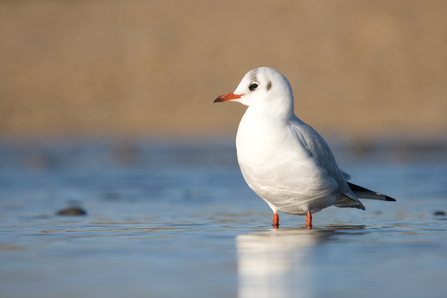
Black-headed gull (winter) ©Tom Marshall
Black-headed gulls
The black-headed gull’s name has been a source of confusion, as its distinctive chocolate-coloured visage only appears in the summer months, while the rest of the year the spots on either side of its head give it the appearance of wearing headphones.
While there are about 140,000 breeding pairs in the UK, more than two million of the birds can be found here over winter, many making the journey from Europe and Russia to seek relative warmth. The noisy flocks are a familiar site on farmland and wetland habitats, as well as flooded gravel pits such as Hosehill Lake near Theale.
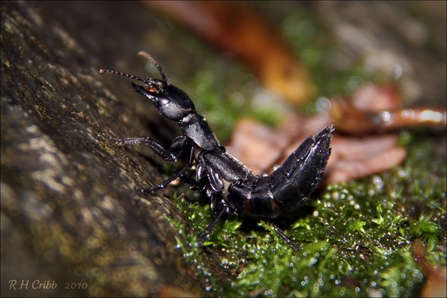
Devil's Coach Horse ©Russ Cribb
Devil’s coach-horse
January is the month when you are least likely to see any insects or arachnids, but the charismatic devil’s coach-horse is a potential exception. These large black beetles have diabolic associations reaching back to the middle ages (hence the name) and are notorious for the defensive mechanism of raising their tails like a scorpion when threatened; they can also secrete a nasty smell.
They are common in woods, gardens and hedgerows across our area, and are voracious predators of slugs and snails. Look out for them at our Greenham Common reserve in Berkshire - a great place to see wildlife year-round.

A rook's most distinguishing feature is its pale bill with a bare base. Photo by Gillian Day
Rookeries
A sociable bird, the rook is a large member of the corvid family that makes a big nest out of twigs in the top of trees, and gathers in large colonies known as 'rookeries'; they often nest in villages and graveyards, but are also birds of farmland and grassland.
The rook can be distinguished from the similar carrion crow by its pale bill, bare, grey bill-base, and the 'baggy trousers' of feathers around its legs.
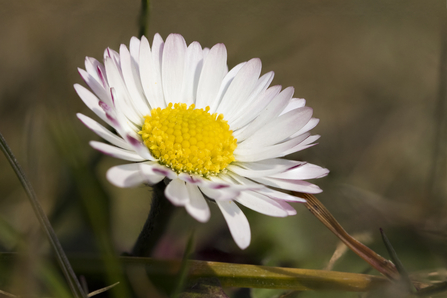
©Chris Lawrence
Common daisy
The petal-plucking game, 'He loves me; he loves me not', is a common children's activity, but did you know that each 'petal' of the common daisy is actually an individual flower? Daisies have composite flower heads made up of lots of tiny flowers which make up the yellow disc in the middle ('disc florets') and the surrounding white 'ray florets' (which look just like petals).
The familiar daisies still bring a bit of cheer when you spot them flowering on a cold day, so as you enjoy your winter walks, try to notice the welcome splashes of colour which adorn the lawn.


